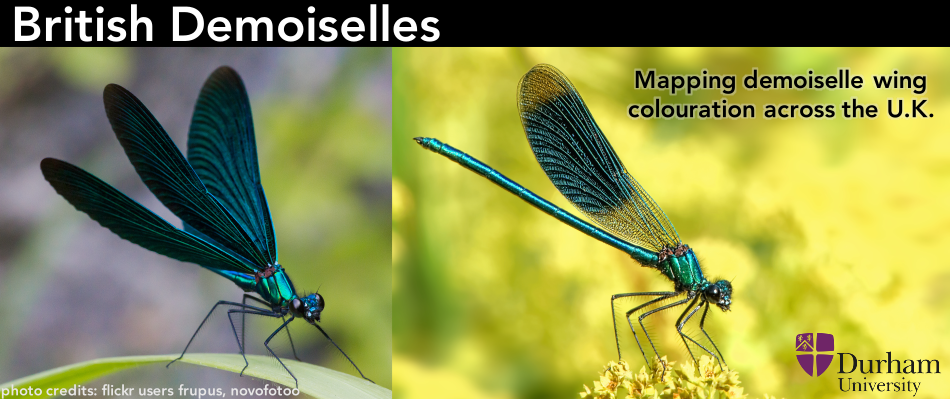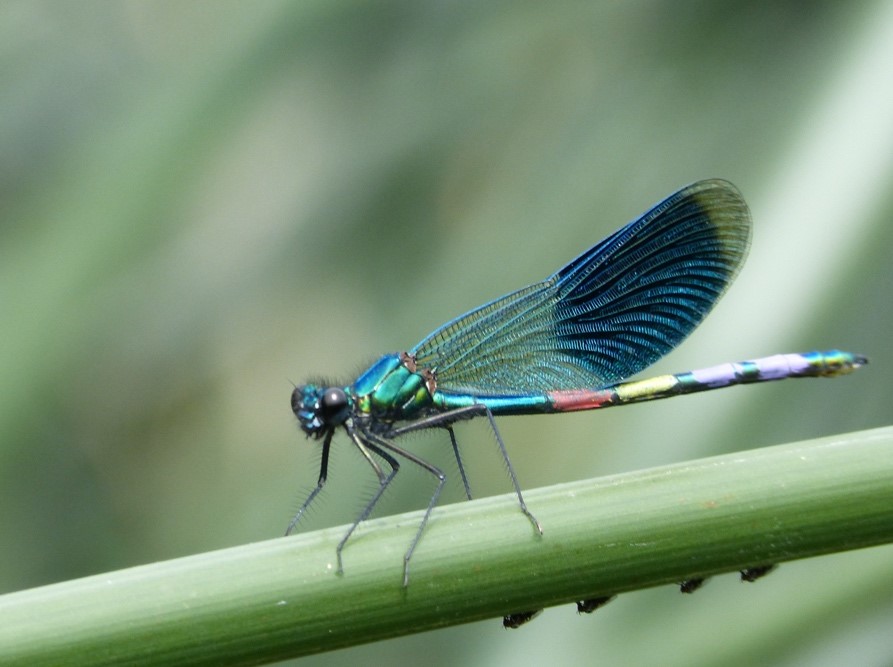
Dr. Jonathan Drury and others at Durham University are mapping geographical and seasonal variation in demoiselle damselfly wing colouration.
These species’ wing colour varies in different areas, but much of the diversity in wing colouration of UK demoiselles remains unknown. This study aims to fill gaps in our understanding of how wing colouration varies in time (e.g., by visiting a stream with demoiselles a couple of times each year) and in space.
How can you help
Please help by taking high-quality photos of the Beautiful Demoiselle (Calopteryx virgo) and the Banded Demoiselle (Calopteryx splendens).
When taking photos remember to record the date and location.
Information on the number of individual demoiselle damselflies that you saw where you took the photo would be very helpful.
You can also use existing photos from previous years, as long as the date and location of the photo are known.
Photography tips
1. Photograph the damselfly’s wings perpendicular to the camera.
2. Get as close as possible to the damselfly.
3. Photograph the damselflies in front of a light background (so that their wings contrast).
4. When possible, photograph the damselflies in the sun.
Where to upload your photos
iRecord is unsuitable for this project so for more information and instructions on how to submit photographs, please visit www.inaturalist.org/projects/british-demoiselles.
If you are submitting multiple photographs, please indicate whether they are repeated photographs of the same individual or of several different individuals.
Observations from the researchers so far
Overall, over a hundred ‘citizen scientists’ from across the UK, many of whom are members of the BDS, submitted a total of nearly 500 photographs to the project during 2018. So far, the we have measured the relative size of male Banded Demoiselles’ wingspots from these photographs. One interesting finding is that there is a change in the average wingspot size over the flight season: males emerging early in the year tend to have smaller wingspots than males that emerge in the peak season. For instance, here is a photograph of a male taken on 1 June.

Photograph of a male taken on 1 June.

Photograph of another male taken a few weeks later on 23 June.
